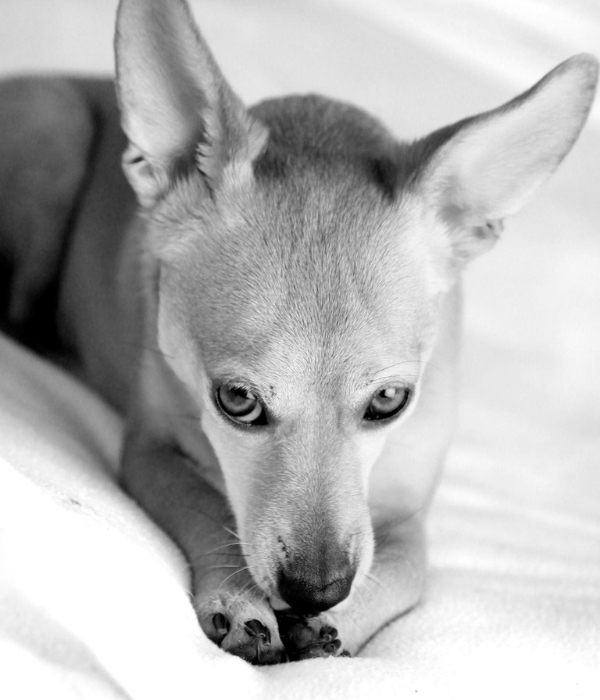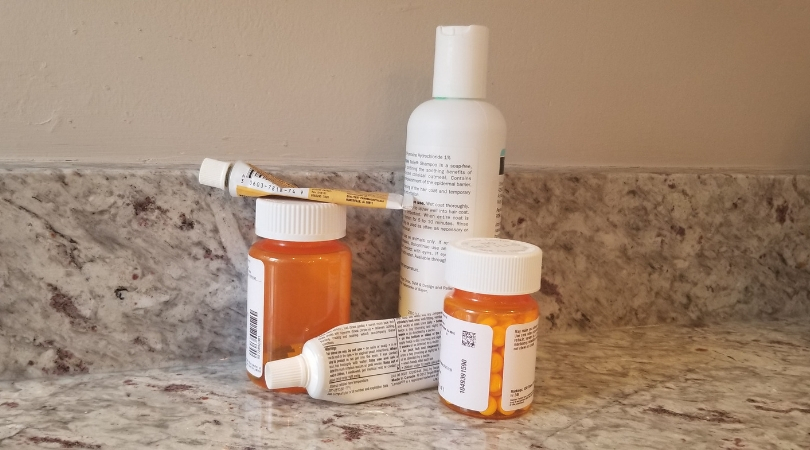That sound can even wake you in the middle of the night -- there is just something about a dog licking his paw or leg that immediately grabs your attention. You know something is wrong, but what is it? You don’t necessarily see any obvious signs of a problem...until you find a raw, pink area of skin. It can seem like this “boo-boo” crops up all of the sudden, and while the actual sore or wound could be caused by any number of issues, one common issue is a lick granuloma.
What is a lick granuloma?
A lick granuloma is an open sore on the skin caused - and worsened - by constant licking. It is generally located on one of the legs, especially near a joint. Typically, the hair will be licked off and the area will be either raw and weeping or thickened and scar-like.
Why does this licking start?
The beginning is usually an itch or a tingling sensation, which on its face can seem so benign. It’s just an itch, right? But in the case of lick granulomas, the dog responds to the sensation by licking, which can actually make the itch even worse. So he’ll bother at it and lick even more...which makes the itch worse...and before long, a vicious cycle develops. The licking can even become a habit! Sometimes the problem that initiated the itching or tingling sensation is gone, but the habit of licking continues.
Why causes that initial irritation?
There is no single, definitive cause for all cases of lick granuloma. However, there are three common problems associated with lick granulomas in dogs:
- an underlying issue that caused the pet to start licking, such as allergies, arthritis, or anxiety.
- a behavioral component in the dog leading to compulsive licking.
- a bacterial component which exacerbates the itching and can be very stubborn to treat.
That bacteria is part of what creates secondary infection and further irritation, no matter the initial cause. Unless all components of the condition are addressed, the lick granuloma won’t truly resolve. In addition, the licking is often episodic and may need repeated rounds of treatment.
How are lick granulomas diagnosed?
Different skin issues can have similar symptoms, and there are so many reasons that any of them could occur. So how does your dog’s doctor conclude that a lick granuloma is a culprit?
In most cases, the diagnosis is made based on the appearance and location of the lesion and the fact that the dog has a compulsion to lick the area. Your family veterinarian may perform a skin scrape to rule out mites and/or skin cytology to evaluate for infection. However, certain skin tumors, parasites, and embedded foreign bodies can create lesions that look very similar. Therefore, if the diagnosis is in doubt or if the dog does not respond well to initial treatment, your family veterinarian may use fungal cultures, radiographs (X-rays), or biopsies to get more information.
How are lick granulomas treated?
First, we want to address potential medical and behavioral factors. Finding and treating the source of the initial urge to lick will help prevent further irritation and secondary infection. Dogs respond best with combination medication therapy and treatment of the underlying condition if it can be uncovered. Boredom and stress are important issues that should be addressed. It is also important to consider that pain or an allergy could be to blame.
In terms of the licked site itself, we need to relieve pain and/or itch, and this is often accomplished with medications. All dogs have secondary bacterial infections within the lick granuloma, and we need to treat that as well. Long-term antibiotic therapy for six to eight weeks may be prescribed, but long-standing, scarred lesions can require four to six months of antibiotic therapy. Plus, we may suggest an Elizabethan collar (or “the cone”) or other means to stop your dog from being able to reach and lick the affected area.

There is a fairly good success rate with this combination treatment. The medications are gradually weaned down one at a time once the lesion is gone. Remember, however, this disease can be episodic and treatment may need to be repeated down the road.
Are there certain dog breeds that are more prone to this condition?
German Shepherds, Doberman Pinschers, Great Danes, Labrador Retrievers, and Irish Setters tend to develop lick granulomas more often than other breeds. However, this condition is possible in any breed. In addition, male dogs are twice as likely to develop lick granuloma than female dogs.
Lick granulomas can be irritating -- for both you and your dog! The good news is that your family veterinarian will be your committed partner to help your pup find relief.
If you have any questions about your dog’s behavior or skin, be sure to call your family veterinarian.
